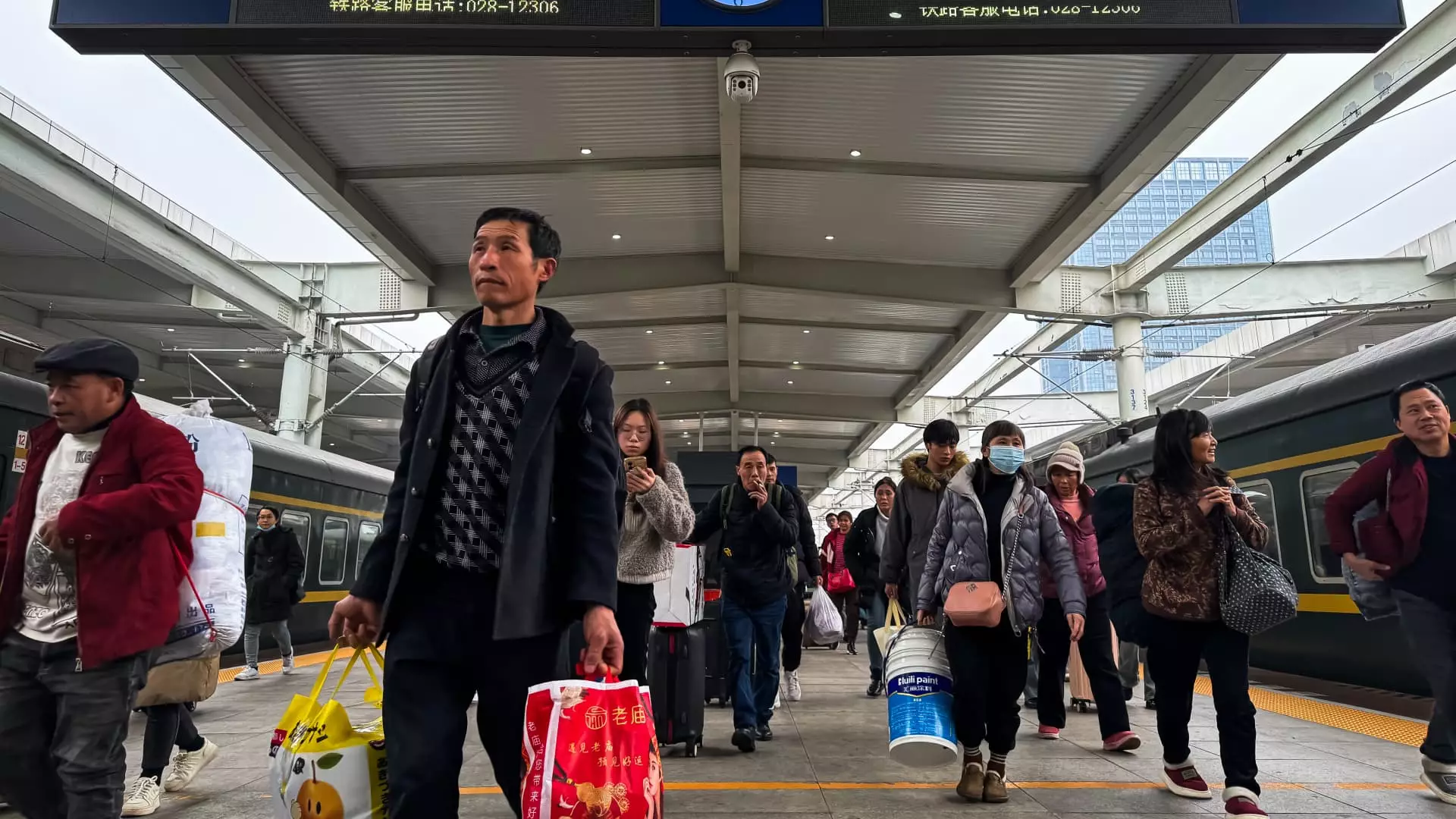China’s economic situation remains precarious as the anticipated governmental support has yet to demonstrate a significant impact. Despite recent measures taken by policymakers, including interest rate cuts and broad stimulus efforts since late September, concrete fiscal strategies are expected to be disclosed only during the annual parliamentary meeting in March. The official Gross Domestic Product (GDP) figures for 2024, set to be released soon, will offer further insights, but early indicators suggest a daunting landscape.
Major investment firms, such as BlackRock Investment Institute, provide a cautious outlook for China’s economic revival. In their recent report, they acknowledged that the government’s fiscal efforts are insufficient to tackle the underlying challenges hindering growth. Interestingly, BlackRock holds a position of modest investment in Chinese stocks, indicating an openness to increasing their stake should economic conditions improve. This illustrates a broader sentiment in the investment community—optimism shadowed by concerns over long-term structural issues within the Chinese economy.
A key issue plaguing the economy is a troubling decline in domestic demand, raising flags about potential deflation. In 2024, consumer prices saw minimal growth—only 0.5% when adjusting for volatile food and energy costs—the slowest annual increase in over a decade, according to data from Wind Information. This sluggishness reflects broader consumer sentiment and spending patterns. Yin Yong, the mayor of Beijing, echoed these sentiments in an official report, emphasizing the troubling state of consumer behavior, decreasing foreign investment, and growth pressures in various industries.
In an effort to rejuvenate the economy, Beijing has set ambitious goals for consumer price inflation, aiming for a target of 2% by 2025, as well as a stronger focus on technology and development. However, as the national economic strategies await announcement in March, preliminary insights from finance officials hint that additional fiscal measures are on the horizon—potentially including an increase in the issuance of ultra-long bonds designed to spur consumption.
The commercial property sector in China is facing undeniable strain. Recent reports indicate that high-end office rents in Beijing saw a drastic decline of 16% in 2024, with an expected additional drop of nearly 15% in the forthcoming year. New shopping centers that launched last year experienced an average occupancy rate of merely 72%, a steep fall compared to previous benchmarks where openings were contingent on higher occupancy expectations. However, the same centers have seen occupancy rates increase to about 90% in just a year, suggesting a potential stabilization in this sector.
The real estate market has been further complicated by previous regulatory crackdowns on high developer debt since 2020. The repercussions of these policies, compounded by the COVID-19 pandemic, continue to reverberate throughout the economy. Recent changes in strategy, aimed at halting the real estate downturn, suggest authorities are reconsidering their previous approaches to stimulate growth in this crucial sector. Analysts, including Jeremy Zook from Fitch Ratings, assert that the market has not yet hit its lowest point and that further intervention will be necessary to stabilize the industry.
Simultaneously, China’s economic landscape is under pressure from rising geopolitical tensions, particularly with the United States. As both nations impose restrictions aimed at bolstering domestic industries, many European businesses are now compelled to adapt to local demands to maintain their market presence in China, leading to concerns over increased operational costs and reduced productivity. The ongoing push for national security, while fostering local capacity in sectors like technology, is increasingly shaping the business environment.
The Chinese government is also redirecting its focus toward domestic consumption over enhancing investment efficiency, as stated by Yang Ping, director at the National Development and Reform Commission. This shift signifies a profound understanding that boosting consumer activity will hold the key to reviving the economy, despite skepticism about immediate impacts from initiatives such as trade-in subsidies. Yang’s comments suggest that, even with eventual policy details to emerge in March, the road to economic recovery may still be fraught with challenges.
While China has embarked on several initiatives aimed at stimulating economic growth, the immediate effects appear limited amidst persistent structural challenges. The faltering consumer demand, compounded by uncertainties in the real estate sector and international pressures, exemplifies a complex economic tapestry facing policymakers. For investors and the global economic community alike, the forthcoming months will be critical in determining whether these government strategies will be effective in fostering a sustainable recovery and restoring confidence in China’s market potential.

